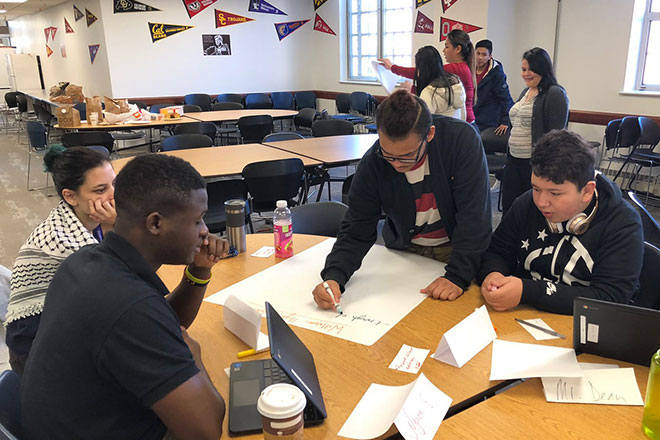by Candice Benge, Kyra Caspary, Lauren Cassidy
April 16, 2021

The murder of George Floyd in May 2020 and the subsequent widespread support for the Black Lives Matter movement underscored the persistent racism that exists in the United States, leading to new calls to mitigate underlying social inequities. Some schools and district leaders joined these calls for greater attention to racial and social equity, pledging to find ways to eliminate the structures and practices that have led to lower average academic achievement for Black and African American and other historically marginalized students and that have pushed some students out of the school system altogether. But what does it mean to pursue equity in a country where, for now, a majority of school board members are White and a majority of students are not? 1, 2
States, districts, and schools have voiced their commitment to equity and ensuring that schools meet the needs of all learners, but strategies for pursuing this goal vary widely. On the one hand, implementing equity-minded policies through top-down mandates such as weighted student funding and renaming of schools seem like meaningful steps in the right direction.3, 4 On the other hand, they do little to capture the voice and experiences of traditionally marginalized students.
To truly understand and address the experiences of all students in the pursuit of educational equity, the Barr Foundation’s Engage New England initiative harnessed student voice in school design. The initiative supported schools across New England in engaging students to reinvent schools for students who are off track to graduate high school. The initiative is predicated on the idea that to meet the needs of all students, educators must start by understanding the full diversity of assets and needs that students bring to the classroom. The initiative supported grantees to integrate student voice broadly across the entire student population—via surveys and interviews to gather input on students’ experiences and goals—and deeply among select students who participated on the school design teams.
A new brief from SRI shares lessons learned from the Engage New England initiative about incorporating student voice in school design. Designing Schools with and for Students identifies two stages for meaningfully engaging students in the design process. First: create a strong foundation for student voice to be heard and valued. Second: develop the structures and processes by which students can meaningfully share their voices. Within each stage are strategies critical for successfully integrating students into the design process:
Stage 1: Lay the foundation
- Learn about your students—their assets, challenges, and goals—through systematic re-search
- Prepare staff to value the power of student voice in school design
Stage 2: Take intentional steps to engage students in planning and design
- Recruit student designers who reflect the diversity of your student population
- Structure the design process so that it is accessible to your students
- Create clear and meaningful roles for your student designers to give them space to con-tribute
- Help students develop skills and knowledge to fully engage with the design process
- Demonstrate to student designers—and their peers—how their input is being used
These lessons are applicable for educators and policymakers interested in how to leverage student voice in their pursuit of equity. Another brief to be released in summer 2021 will focus on additional lessons related to structuring and supporting similar initiatives aimed at transforming schools to serve the needs of all students.
This research is supported by a grant from the Barr Foundation.
Footnotes
2 National Center for Educational Statistics. (2020). Racial/ethnic enrollment in public schools. https://nces.ed.gov/programs/coe/indicator_cge.asp
3Roza, M. (2019). Weighted student funding is on the rise. Here’s what we are learning. https://ies.ed.gov/blogs/research/post/weighted-student-funding-is-on-the-rise-here-s-what-we-are-learning
4Kennedy, M. (2021). San Francisco may rename schools named after Washington, Lincoln and others. https://www.npr.org/2021/01/28/961511395/san-francisco-may-rename-schools-named-after-washington-lincoln-and-others
Topics: Access and equity English learners High school redesign Low income Students of color Students off track to graduate
Tags: Implementation research
